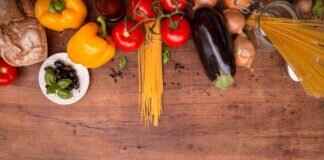is a topic that highlights the importance of dairy products within the rich culinary traditions of Central Asia. These products not only serve as essential sources of nutrition but also play a significant role in cultural practices and everyday meals. This article will delve into the various dairy products prevalent in the region, their nutritional benefits, cultural significance, and how they are woven into the fabric of daily life.
Central Asian cuisine boasts a diverse array of dairy products, including milk, yogurt, cheese, and fermented drinks. Each of these products is integral to traditional dishes and daily nutrition. For instance, kefir and ayran are popular fermented drinks that not only provide refreshment but also contribute to gut health.
Dairy products are packed with essential nutrients such as calcium, protein, and various vitamins. These nutrients are crucial for maintaining strong bones and overall health, particularly for growing children and active adults. The inclusion of dairy in the diet helps meet the nutritional needs of the population, especially in rural areas where access to diverse food sources may be limited.
Dairy holds a profound cultural significance in Central Asia, often linked to hospitality and traditional rituals. It reflects the region’s nomadic heritage, where dairy products were vital for sustenance during long journeys. In many cultures, offering dairy to guests symbolizes abundance and generosity, reinforcing social bonds.
In Central Asian kitchens, dairy is featured in a variety of traditional dishes, from hearty soups like shorpa to sweet delicacies such as chak-chak. The versatility of dairy allows it to be incorporated into both savory and sweet recipes, showcasing its essential role in everyday cooking.
Fermented dairy products such as kefir and matsoni are staples in Central Asian diets. These products are renowned for their probiotic benefits, aiding in digestion and enhancing gut health. Regular consumption of fermented dairy can contribute to a balanced microbiome, promoting overall wellness.
Dairy usage varies significantly across Central Asian regions, with unique local specialties emerging from diverse agricultural practices and cultural influences. For example, in Kazakhstan, kumys (fermented mare’s milk) is a traditional drink, while in Kyrgyzstan, kurt (dried cheese balls) is a favored snack.
During celebrations and gatherings, dairy products often take center stage, symbolizing abundance and hospitality. Dishes featuring dairy are commonly prepared for weddings, holidays, and family reunions, highlighting the importance of sharing food in Central Asian culture.
Traditional methods of processing and preserving dairy, such as drying and fermenting, are crucial for extending shelf life and enhancing flavors. These techniques are particularly important in rural communities where refrigeration may not be available, ensuring that dairy products remain safe and nutritious.
With globalization, the landscape of dairy consumption in Central Asia is evolving. Modern dietary trends are being incorporated into traditional practices, leading to a fusion of flavors and techniques. This evolution allows for a broader range of dairy products to be enjoyed while still honoring the region’s culinary heritage.
Incorporating dairy into a balanced diet can offer numerous health benefits. Understanding portion sizes and the types of dairy products available can help individuals enjoy these foods while maintaining their nutritional goals. Whether through traditional recipes or modern adaptations, dairy remains a vital component of a healthy diet in Central Asia.

What Are the Key Dairy Products in Central Asian Cuisine?
Central Asian cuisine is rich and diverse, with dairy products playing a crucial role in both daily nutrition and traditional dishes. The region’s unique climate and agricultural practices have led to the development of various dairy products that are not only nutritious but also integral to the cultural identity of the people. This article delves into the key dairy products found in Central Asian cuisine, highlighting their significance and usage.
Central Asian cuisine showcases a variety of dairy products, each contributing to the region’s culinary landscape. The most prominent dairy items include:
- Milk: Fresh milk is a staple in many households, often sourced from cows, goats, or sheep. It serves as a base for various dishes and is consumed directly or used in cooking.
- Yogurt: This fermented dairy product is popular for its tangy flavor and health benefits. It is often enjoyed plain or used in salads and dips, such as tzatziki.
- Cheese: Central Asian cheese varieties, such as kurt and feta, are made from sheep or cow milk. These cheeses are often enjoyed as snacks or incorporated into main dishes.
- Fermented Drinks: Drinks like kefir and ayran are staples in the diet, known for their probiotic properties. They are refreshing and aid in digestion, making them popular choices during hot weather.
These dairy products are not merely food items; they embody the traditions and customs of the Central Asian people. For instance, sharing a bowl of yogurt or a glass of fermented drink is a sign of hospitality and friendship.
Dairy products are a vital source of essential nutrients in Central Asia. They are rich in calcium, protein, and various vitamins, making them especially important for children and active adults. The consumption of dairy helps in:
- Building strong bones and teeth due to high calcium content.
- Providing necessary proteins for muscle development and repair.
- Offering vitamins such as B12 and riboflavin, which are crucial for energy metabolism.
In rural areas, dairy products often form the backbone of the diet, providing sustenance and energy for daily activities.
Dairy holds a profound cultural significance in Central Asia. It is often associated with hospitality and is central to many traditional rituals and celebrations. For example, during weddings and festivals, dairy products are prominently featured to symbolize abundance and generosity. The nomadic heritage of the region also plays a role, as herding livestock has been a way of life for centuries, making dairy an integral part of the culture.
In Central Asian cuisine, dairy is incorporated into a wide array of traditional dishes. From hearty soups to sweet desserts, dairy enhances flavors and adds nutritional value. Common uses include:
- Soups: Dairy is often added to soups to create creamy textures and rich flavors.
- Desserts: Dairy-based sweets, such as custards and puddings, are popular, often flavored with nuts and dried fruits.
- Flatbreads: Some breads are made with yogurt or milk, adding moisture and richness to the final product.
These culinary practices highlight the versatility of dairy in creating both savory and sweet dishes that are cherished across generations.
Fermented dairy products are a cornerstone of Central Asian diets. Items like kefir and ayran are not only delicious but also packed with health benefits:
- Probiotics: These products contain beneficial bacteria that promote gut health and aid digestion.
- Hydration: Fermented drinks are often consumed to stay hydrated, especially in warmer climates.
The fermentation process also enhances the flavors of these products, making them a favorite among locals.
Across Central Asia, the use of dairy varies by region, reflecting local agricultural practices and cultural influences. For instance:
- Kazakhstan: Known for its rich variety of cheeses, often enjoyed with bread.
- Kyrgyzstan: Famous for its creamy kymyz, a fermented mare’s milk drink.
- Uzbekistan: Utilizes yogurt extensively in salads and as a side dish.
This regional diversity showcases the adaptability of dairy within various culinary traditions.

How Does Dairy Contribute to Nutritional Needs?
Dairy products play a crucial role in the diets of many cultures around the world, and in Central Asia, they are especially significant. These products are not only a staple in daily meals but also provide a wealth of essential nutrients that are vital for maintaining health and well-being. In this section, we will explore how dairy contributes to nutritional needs, particularly focusing on its rich content of calcium, protein, and vitamins.
Calcium is a fundamental mineral that supports various bodily functions. It is essential for:
- Bone Health: Calcium is vital for developing and maintaining strong bones, especially in growing children.
- Muscle Function: Adequate calcium levels are necessary for muscle contractions and overall physical performance.
- Nerve Transmission: Calcium plays a crucial role in transmitting signals between the brain and the rest of the body.
In Central Asia, dairy products like milk and yogurt serve as primary sources of calcium, helping to prevent deficiencies that can lead to health issues such as osteoporosis.
Protein is another essential nutrient found abundantly in dairy products. It is crucial for:
- Growth: Protein is vital for the growth and development of children and adolescents.
- Tissue Repair: It aids in repairing tissues and muscles, which is particularly important for active adults and athletes.
- Immune Function: Proteins play a role in the immune system, helping the body to fight infections.
Central Asian diets often include cheese and fermented dairy products, which provide high-quality protein that supports these bodily functions effectively.
Dairy products are also rich in several vitamins, including:
- Vitamin D: This vitamin aids in calcium absorption and is crucial for bone health.
- Vitamin B12: Essential for red blood cell formation and neurological function.
- Riboflavin (Vitamin B2): Important for energy production and cellular function.
Incorporating dairy into the diet ensures that individuals, especially children and active adults, receive these vital vitamins necessary for overall health.
Fermented dairy products, such as kefir and ayran, are particularly beneficial for digestive health. These products contain probiotics, which are live bacteria that promote a healthy gut microbiome. A balanced gut microbiome is essential for:
- Improved Digestion: Probiotics help break down food and absorb nutrients more efficiently.
- Enhanced Immune Function: A healthy gut contributes to a stronger immune system.
- Reduced Gastrointestinal Issues: Probiotics can alleviate symptoms of digestive disorders.
In Central Asian diets, the consumption of fermented dairy is a common practice that aligns with traditional health beliefs and supports digestive wellness.
Incorporating dairy into a balanced diet can be achieved through various means. It is important to consider portion sizes and types of dairy consumed. For instance:
- Opt for low-fat options when possible to reduce saturated fat intake.
- Include a variety of dairy products to ensure a wide range of nutrients.
- Pair dairy with fruits, nuts, or whole grains for a more balanced meal.
By understanding how dairy contributes to nutritional needs, individuals can make informed choices that enhance their health and well-being.

What Is the Cultural Significance of Dairy?
Dairy products hold a profound cultural significance in Central Asia, deeply intertwined with the region’s history and social practices. The nomadic lifestyle prevalent in countries like Kazakhstan, Kyrgyzstan, and Uzbekistan has shaped a unique relationship with dairy, making it a staple in both daily nutrition and traditional rituals.
In Central Asian cultures, dairy is not merely a source of sustenance; it embodies hospitality and generosity. When guests visit, offering dairy products such as kefir, ayran, or homemade cheeses is a customary practice that symbolizes warmth and respect. This tradition reflects the communal nature of life in the steppes, where sharing food strengthens social bonds and fosters a sense of belonging.
Moreover, dairy is often featured in significant ceremonial events. For instance, during weddings and festivals, dairy dishes are prepared in abundance, signifying prosperity and abundance. The preparation of these dishes often involves elaborate rituals, showcasing the skills passed down through generations. This not only preserves cultural heritage but also reinforces community ties as families come together to celebrate and prepare these traditional foods.
Another essential aspect of dairy in Central Asian culture is its role in traditional medicine. Fermented dairy products, such as kumis (fermented mare’s milk), are believed to have health benefits, aiding digestion and boosting immunity. These beliefs are deeply rooted in the agrarian lifestyle, where people relied on natural resources for their health and well-being. The medicinal properties attributed to dairy further emphasize its importance in everyday life.
The variety of dairy products available in Central Asia reflects the region’s diverse agricultural practices. Each country has its unique specialties, often influenced by local customs and the environment. For example, in Kyrgyzstan, clotted cream known as kaymak is a cherished delicacy, while in Kazakhstan, tvorog (a type of cottage cheese) is commonly used in both savory and sweet dishes. This diversity not only enriches the culinary landscape but also highlights the adaptability of dairy in various cultural contexts.
Furthermore, the processing and preservation of dairy products showcase traditional skills that have been honed over centuries. Techniques such as fermentation and drying are not only practical for extending shelf life but also enhance the flavors of the dairy, making it a cherished ingredient in many households. These methods are often taught to younger generations, ensuring that the cultural significance of dairy continues to thrive.
In recent years, globalization has influenced dairy consumption patterns in Central Asia. While traditional practices remain strong, there is an increasing incorporation of modern dietary trends. This fusion leads to innovative uses of dairy in contemporary cuisine, merging old and new flavors that appeal to younger generations. However, despite these changes, the cultural significance of dairy remains steadfast, rooted in the values of hospitality, community, and tradition.
In conclusion, dairy products are much more than a nutritional staple in Central Asia; they are a vital part of the region’s cultural identity. From hospitality to health, and from tradition to modernity, dairy continues to play an essential role in the lives of Central Asians, reflecting their rich heritage and communal values.

How Is Dairy Used in Traditional Dishes?
Central Asian cuisine is a vibrant tapestry of flavors, textures, and aromas, heavily influenced by the region’s nomadic heritage and agricultural practices. Among the myriad of ingredients that contribute to its uniqueness, dairy products stand out as fundamental components. From savory soups to delightful desserts, dairy plays a pivotal role in shaping traditional dishes across Central Asia.
In Central Asian households, dairy is not merely an ingredient; it is a way of life. The incorporation of dairy into traditional dishes reflects the region’s rich cultural heritage and culinary diversity. Here are some key ways dairy is utilized:
- Soups and Stews: Dairy is often used to enrich hearty soups such as shorpa, a popular meat and vegetable soup. Cream, yogurt, or milk can be added to enhance the flavor and provide a creamy texture, making the dish more satisfying.
- Dairy-Based Sauces: Many traditional dishes are served with yogurt-based sauces, which add a refreshing tang. For example, kebabs are often accompanied by a garlic yogurt sauce, elevating the overall taste experience.
- Cheese Varieties: Central Asian cuisine boasts various types of cheese, such as qurt (dried cheese) and feta-like cheeses. These cheeses are used in savory pastries like somsa and pirozhki, adding richness and depth to the fillings.
- Sweets and Desserts: Dairy also finds its way into traditional desserts. For instance, chaka, a sweet yogurt dish, is often enjoyed with honey and nuts, showcasing the versatility of dairy in both savory and sweet contexts.
- Fermented Beverages: Fermented dairy drinks like kefir and ayran are staples in Central Asian diets. These beverages are not only refreshing but also provide numerous health benefits, including improved digestion and gut health.
The use of dairy in these traditional dishes is not just about flavor; it also serves nutritional purposes. Dairy products are rich in calcium, protein, and essential vitamins, making them vital for the health of families, especially in regions where meat can be scarce.
Moreover, the cultural significance of dairy cannot be overstated. In many Central Asian cultures, offering dairy products to guests symbolizes hospitality and abundance. The act of sharing dairy-laden dishes during celebrations and family gatherings fosters community bonds and reflects the values of generosity and warmth.
As globalization influences culinary practices, traditional uses of dairy are evolving. Contemporary chefs are experimenting with traditional recipes, incorporating modern techniques while maintaining the essence of Central Asian flavors. This fusion results in exciting new dishes that honor the past while embracing the future.
In conclusion, dairy is a cornerstone of Central Asian cuisine, intricately woven into the fabric of daily life and cultural traditions. Its versatility allows it to enhance a wide range of dishes, from comforting soups to indulgent desserts, while also providing essential nutrients. As Central Asian cuisine continues to evolve, the role of dairy remains as significant as ever, ensuring that these cherished traditions are preserved for future generations.

What Are Fermented Dairy Products and Their Benefits?
Fermented dairy products have long been a cornerstone of Central Asian diets, with items such as kefir and ayran standing out for their unique flavors and health benefits. These products are not only enjoyed for their taste but also for their significant probiotic properties, which contribute to overall gut health and improved digestion.
Fermented dairy products are created through the fermentation process, where beneficial bacteria ferment lactose (the sugar found in milk) into lactic acid. This process not only enhances the flavor and texture of dairy products but also increases their digestibility. In Central Asia, kefir, a tangy and effervescent drink, is made from cow, goat, or sheep milk, while ayran is a refreshing yogurt-based beverage mixed with water and salt.
- Probiotic Benefits: Fermented dairy products are rich in probiotics, which are live bacteria that promote a healthy gut microbiome. These probiotics can aid in digestion and help combat gastrointestinal issues.
- Enhanced Nutrient Absorption: The fermentation process can increase the bioavailability of nutrients, making it easier for the body to absorb vitamins and minerals.
- Immune System Support: Regular consumption of fermented dairy may strengthen the immune system, as a healthy gut is linked to improved immunity.
- Lactose Intolerance Relief: For those who are lactose intolerant, fermented dairy products can often be better tolerated due to the lower lactose content resulting from fermentation.
In Central Asian cultures, fermented dairy products are integral to daily meals. Kefir is often consumed as a drink, enjoyed plain or flavored with fruits, while ayran serves as a refreshing accompaniment to spicy dishes and grilled meats. These products are also used in traditional soups and sauces, adding a creamy texture and tangy flavor that enhances the overall dish.
Beyond their nutritional benefits, fermented dairy products hold a special place in the cultural practices of Central Asia. They are often associated with hospitality and are served to guests as a sign of respect and generosity. In many rural communities, the preparation of these products is a communal activity, reflecting the region’s strong sense of community and shared traditions.
As interest in health and wellness grows globally, fermented dairy products have gained popularity outside of Central Asia. Many health-conscious individuals are incorporating these products into their diets for their numerous health benefits. Whether enjoyed in smoothies, salad dressings, or as a standalone snack, kefir and ayran are versatile ingredients that can fit seamlessly into a modern lifestyle.
In summary, fermented dairy products like kefir and ayran are not just staples of Central Asian cuisine; they offer a wealth of health benefits and cultural significance. Their probiotic properties enhance gut health and digestion, making them a valuable addition to any diet. As the world becomes more health-conscious, the appreciation for these traditional foods continues to grow, bridging the gap between ancient culinary practices and contemporary dietary trends.

How Do Different Regions Utilize Dairy Differently?
Dairy usage across Central Asia is a fascinating reflection of the region’s diverse agricultural practices and cultural influences. Each country, including Kazakhstan, Kyrgyzstan, and Uzbekistan, showcases unique dairy products that highlight local traditions and culinary preferences. Understanding these regional variations offers insight into how dairy is intertwined with daily life and cultural identity.
In Kazakhstan, the production of kurt, a dried cheese, is prevalent. This product is made from fermented milk and serves as a portable snack for nomadic herders. In contrast, Kyrgyzstan is famous for its ayran, a refreshing yogurt-based drink that is often consumed with meals. Meanwhile, Uzbekistan boasts a variety of cheeses, including feta-like cheeses that are integral to their traditional dishes.
The climate and geography of each region play a significant role in dairy production. For instance, the mountainous terrain of Kyrgyzstan allows for the grazing of livestock at high altitudes, resulting in milk that is rich in flavor and nutrients. Conversely, the expansive steppes of Kazakhstan provide ample grazing land for cattle, leading to a higher production of cow’s milk. In Uzbekistan, the fertile valleys support a diverse range of livestock, contributing to a rich dairy culture.
Traditional methods of processing dairy vary significantly across regions. In Kazakhstan, the practice of fermentation is common, with milk often left to sour naturally, creating a tangy flavor profile. Kyrgyzstan uses techniques such as churning to produce butter, which is then used in various dishes. In Uzbekistan, dairy is often boiled and then cooled to create a variety of textures and flavors, showcasing the culinary creativity of the region.
Dairy is a staple in the daily diets of Central Asians. In Kazakhstan, milk is often consumed fresh or used in soups and stews, while kurt is a popular accompaniment to tea. In Kyrgyzstan, ayran is frequently served with pilaf or bread, enhancing the flavors of these staple foods. Uzbekistan sees dairy used in both savory and sweet dishes, with cheese often stuffed into pastries or served alongside fruits.
Dairy products are not just dietary staples; they also hold cultural significance. In many Central Asian cultures, offering dairy products to guests is a sign of hospitality and respect. Special occasions often feature dishes made with rich creams and cheeses, symbolizing abundance and community. For example, during weddings and festivals in Kyrgyzstan, a variety of dairy dishes are prepared to celebrate the occasion.
With globalization, the consumption of dairy in Central Asia is evolving. Younger generations are increasingly incorporating international dairy products and recipes into their diets while still honoring traditional practices. This fusion has led to a resurgence of interest in local dairy products, with artisanal dairies emerging to meet the demand for high-quality, traditional items.
In conclusion, the diverse ways in which dairy is utilized across Central Asia reflect the rich tapestry of cultural influences and agricultural practices in the region. From unique local specialties to the integration of dairy into everyday meals and celebrations, dairy continues to play a vital role in the culinary landscape of Central Asia.

What Role Does Dairy Play in Celebratory Meals?
Dairy products hold a special place in the hearts and traditions of Central Asian cultures, especially during celebratory meals and gatherings. These products not only symbolize abundance and hospitality but also serve as a medium for sharing and strengthening community bonds. The presence of dairy in festive occasions reflects the region’s rich agricultural heritage and the importance of food in social interactions.
In Central Asia, dairy is often featured prominently in various celebratory dishes. For instance, during weddings, festivals, and family reunions, dishes made with yogurt, cheese, and fermented drinks take center stage. Such meals typically include kefir, a tangy fermented milk drink that is not only refreshing but also promotes good health. This beverage is often served alongside traditional breads and meats, enhancing the overall flavor profile of the meal.
Another popular dairy item is qurt, a type of dried cheese that is especially cherished in rural areas. It is often shared among guests as a symbol of friendship and generosity. The act of offering dairy products to visitors is a significant gesture, signifying that the host values their presence and wishes to share the bounty of their land.
What Makes Dairy Essential in Celebratory Meals?
- Symbol of Prosperity: Dairy products are often seen as a sign of wealth and prosperity. Their inclusion in meals signifies that the host is capable of providing for their guests.
- Cultural Heritage: The use of dairy in celebrations is deeply rooted in the nomadic traditions of Central Asia, where livestock played a crucial role in daily life. This heritage is preserved through culinary practices.
- Community Bonding: Sharing dairy products fosters a sense of community, as people gather to enjoy meals together, reinforcing social ties.
How Are Dairy Products Prepared for Celebrations?
Preparation methods for dairy products can vary widely across different regions. In some areas, fresh milk is churned into butter, which is then used in cooking or served alongside bread. In others, milk is fermented to create ayran, a refreshing yogurt drink that complements spicy dishes. The preparation process itself often involves family gatherings, where knowledge and skills are passed down through generations.
What Are the Health Benefits of Dairy in Festive Meals?
In addition to their cultural significance, dairy products also offer numerous health benefits. They are rich in calcium, protein, and essential vitamins, making them a nutritious addition to any meal. During celebrations, when people indulge in rich foods, dairy can help balance the diet by providing necessary nutrients.
Moreover, fermented dairy products like kefir and ayran are known for their probiotic properties, which can aid digestion, especially after heavy meals. This aspect is particularly valued in Central Asian cultures, where the health of the community is often linked to the quality of the food consumed.
In conclusion, dairy products play an indispensable role in Central Asian celebratory meals, serving as a testament to the region’s rich cultural heritage, nutritional needs, and the importance of hospitality. Whether it’s the creamy texture of yogurt or the tangy flavor of fermented drinks, dairy continues to be a vital component of social gatherings, reflecting the values of sharing, community, and abundance.

How Is Dairy Processed and Preserved?
In the vast landscapes of Central Asia, the processing and preservation of dairy products are not merely practical tasks; they are steeped in tradition and necessity. Traditional methods such as drying, fermenting, and smoking have been passed down through generations, serving as vital techniques for extending the shelf life of dairy while enhancing its flavors.
What Are the Traditional Methods of Dairy Preservation?
- Drying: This method involves removing moisture from dairy products, which helps to inhibit the growth of bacteria and mold. Dried milk and cheese can be stored for extended periods, making them essential for rural communities where refrigeration is not always available.
- Fermentation: Fermentation transforms milk into yogurt, kefir, and various cheeses, introducing beneficial bacteria that not only preserve the product but also enhance its nutritional profile. This process increases the bioavailability of nutrients and adds unique flavors that are cherished in traditional dishes.
- Smoking: In some cultures, smoking dairy products not only preserves them but also imparts a distinctive flavor. This method is often used for certain cheeses, adding a robust taste that complements many traditional recipes.
Why Are These Methods Important?
For many rural communities, these traditional methods are essential for survival. The ability to preserve dairy products allows families to stockpile food for the harsh winters or during times of scarcity. Moreover, these techniques contribute to food security and help maintain a varied diet throughout the year. The flavors developed through fermentation and drying also play a significant role in the culinary identity of the region, making these products more than just sustenance.
How Do Traditional Practices Influence Modern Dairy Processing?
While modern technology has introduced new methods for dairy processing, the influence of traditional practices remains strong. Many contemporary dairy producers are now looking back at these age-old techniques to create artisanal products that appeal to consumers seeking authenticity and quality. The resurgence of interest in fermented products like yogurt and kefir is a testament to the enduring appeal of traditional dairy processing methods.
What Are the Nutritional Benefits of Processed Dairy?
Processed dairy products, particularly those that are fermented, offer numerous health benefits. They are often rich in probiotics, which support gut health and digestion. Fermented dairy is also easier to digest for individuals who may be lactose intolerant, allowing them to enjoy the nutritional benefits of dairy without discomfort. Additionally, the preservation methods often enhance the flavors and textures of dairy products, making them more enjoyable to consume.
How Do Regional Variations Affect Dairy Processing?
Across Central Asia, regional variations in climate, culture, and available resources significantly influence dairy processing methods. For instance, in mountainous areas, where fresh milk may be scarce during winter, communities have developed unique cheese-making techniques that allow them to store dairy for longer periods. In contrast, flatland regions may focus more on yogurt production due to the abundance of fresh milk.
In conclusion, the traditional methods of processing and preserving dairy, such as drying and fermenting, are not only crucial for extending shelf life but also for enhancing flavors and maintaining cultural heritage. As these practices continue to evolve and adapt, they remain a cornerstone of Central Asian cuisine and a vital aspect of daily life for many communities.

What Are the Modern Trends in Dairy Consumption?
In recent years, the landscape of dairy consumption in Central Asia has undergone a significant transformation. As globalization continues to influence dietary habits, the region’s traditional dairy practices are evolving, resulting in a rich tapestry of flavors and culinary techniques. This fusion not only honors the deep-rooted traditions of Central Asian cultures but also embraces contemporary dietary trends.
Central Asian dairy consumption is increasingly characterized by a blend of traditional and modern influences. The rise of health consciousness among consumers has led to a growing interest in nutritious dairy options. Products such as low-fat yogurt and probiotic-rich kefir are becoming staples in many households, reflecting a shift towards healthier eating patterns. This trend is particularly evident among younger generations who are more inclined to explore diverse dietary choices.
Another notable trend is the incorporation of dairy into plant-based diets. With the increasing popularity of vegetarianism and veganism, some Central Asian producers are experimenting with dairy alternatives made from nuts, soy, and oats. These innovations cater to a broader audience while still retaining the essence of traditional flavors. For instance, nut-based yogurts infused with local fruits offer a unique twist that appeals to both traditionalists and modern consumers alike.
Furthermore, the influence of international cuisine has introduced new dairy-based dishes to the Central Asian culinary scene. Chefs and home cooks are now integrating global flavors into traditional recipes, creating exciting new dishes that showcase the versatility of dairy. For example, the fusion of Central Asian cheese with Mediterranean herbs and spices has resulted in innovative appetizers that are gaining popularity at social gatherings and celebrations.
Despite these modern trends, the essence of traditional dairy practices remains intact. Many families continue to produce their own dairy products, utilizing age-old techniques passed down through generations. The process of making kurt (dried yogurt balls) or ayran (a yogurt-based drink) is not just about sustenance; it is a cultural ritual that fosters community bonds and preserves heritage.
Moreover, local markets are thriving with vendors selling homemade dairy products, allowing consumers to connect with their roots while enjoying the benefits of fresh, locally sourced ingredients. This blend of modern convenience and traditional authenticity is crucial in maintaining the cultural significance of dairy in Central Asia.
Globalization has also facilitated greater access to international dairy products, leading to an increase in imports of cheese and yogurt from other countries. This influx has introduced new flavors and textures to the Central Asian palate, encouraging experimentation and adaptation in local cooking. However, this also raises questions about the sustainability of local dairy production and the preservation of traditional methods.
As consumers become more discerning, there is a growing demand for transparency in dairy sourcing. Many are now prioritizing organic and ethically produced dairy products, which has prompted local farmers to adopt more sustainable practices. This shift not only benefits the environment but also enhances the quality of the products available in the market.
Technology is playing a pivotal role in shaping the future of dairy consumption in Central Asia. From innovative processing techniques that extend shelf life to advanced marketing strategies that promote dairy products, technology is making dairy more accessible and appealing to consumers. Social media platforms are also serving as powerful tools for educating the public about the health benefits of dairy, further driving its consumption.
In conclusion, the modern trends in dairy consumption in Central Asia reflect a dynamic interplay between tradition and innovation. As the region embraces new dietary trends while honoring its rich culinary heritage, dairy continues to play a vital role in the daily lives of its people. The future of dairy in Central Asia looks promising, with a focus on health, sustainability, and cultural preservation.

How Can Dairy Be Integrated into a Healthy Diet?
Integrating dairy into a healthy diet is a topic of great importance for many individuals seeking to enhance their nutritional intake. Dairy products, such as milk, yogurt, and cheese, are not only delicious but also packed with essential nutrients that can contribute significantly to overall health. Understanding how to incorporate these foods effectively can help individuals meet their dietary goals while enjoying the rich flavors and textures that dairy has to offer.
Dairy products are a powerhouse of nutrients. They are particularly rich in:
- Calcium – Vital for strong bones and teeth.
- Protein – Essential for muscle repair and growth.
- Vitamins – Especially B vitamins, which are crucial for energy metabolism.
- Probiotics – Found in fermented dairy, beneficial for gut health.
When selecting dairy products, it’s important to consider fat content and added sugars. Opt for:
- Low-fat or fat-free options to reduce caloric intake while still enjoying the benefits.
- Plain yogurt instead of flavored varieties to avoid excess sugars.
- Cheese in moderation due to its high fat and sodium content.
Understanding portion sizes is crucial for incorporating dairy into a balanced diet. The general recommendation for adults is:
- 2-3 servings of dairy per day. This can include:
- 1 cup of milk
- 1 cup of yogurt
- 1.5 ounces of cheese
Dairy can be seamlessly integrated into meals throughout the day:
- Breakfast: Start your day with a bowl of oatmeal topped with yogurt and fresh fruit.
- Lunch: Add cheese to salads or sandwiches for added flavor and nutrition.
- Dinner: Incorporate dairy into sauces or casseroles for creaminess and taste.
- Snacks: Choose a glass of milk or a serving of cheese with whole-grain crackers.
The consumption of dairy has been linked to several health benefits, including:
- Bone health: Regular dairy intake can help prevent osteoporosis.
- Muscle function: The protein in dairy supports muscle maintenance and recovery.
- Weight management: Some studies suggest that dairy can aid in weight loss due to its protein content, which promotes satiety.
For individuals with lactose intolerance, there are several alternatives available:
- Lactose-free dairy products are widely available and provide the same nutritional benefits without discomfort.
- Plant-based alternatives, such as almond milk, soy yogurt, and coconut-based cheeses, can be included, though they may differ in nutrient content.
In conclusion, incorporating dairy into a healthy diet can offer numerous benefits, provided that individuals are mindful of their choices and portion sizes. By selecting the right dairy products and integrating them into various meals, one can enjoy the flavors and nutritional advantages that dairy has to offer while maintaining their health goals.
Frequently Asked Questions
- What are the most common dairy products used in Central Asian cuisine?
In Central Asian cuisine, you’ll find a delightful array of dairy products such as milk, yogurt, cheese, and fermented drinks. Each of these plays a crucial role in traditional dishes and everyday nutrition, bringing rich flavors and essential nutrients to the table.
- How does dairy benefit our health?
Dairy products are packed with calcium, protein, and essential vitamins, making them a vital part of a balanced diet. They’re especially important for children and active adults, supporting bone health and overall well-being.
- What cultural roles does dairy play in Central Asia?
Dairy is deeply woven into the cultural fabric of Central Asia, often symbolizing hospitality and tradition. It’s common to see dairy featured in rituals and gatherings, reflecting the region’s rich nomadic heritage and agrarian lifestyle.
- How is dairy integrated into traditional meals?
From hearty soups to sweet desserts, dairy is incredibly versatile in Central Asian cooking. It enhances flavors and adds nutritional value, making it a staple ingredient in many beloved dishes.
- What are the benefits of fermented dairy products?
Fermented dairy products like kefir and ayran are not only delicious but also packed with probiotics, which can aid digestion and improve gut health, making them a staple in many households.
- How do dairy practices differ across Central Asian regions?
Each region has its unique way of utilizing dairy, influenced by local agricultural practices and cultural traditions. For example, Kazakhstan, Kyrgyzstan, and Uzbekistan each showcase distinct dairy specialties that reflect their heritage.
- What role does dairy play in celebrations?
Dairy products are often central to celebratory meals in Central Asia, symbolizing abundance and community. Sharing dairy-rich dishes during gatherings highlights the importance of food in cultural practices.
- How is dairy preserved in traditional settings?
Traditional methods such as drying and fermenting are essential for preserving dairy, especially in rural areas. These techniques extend shelf life and enhance flavors, ensuring that dairy can be enjoyed year-round.
- What modern trends are emerging in dairy consumption?
With globalization, Central Asian dairy consumption is evolving. While traditional practices remain, there’s a growing trend toward incorporating modern dietary preferences, leading to exciting new flavors and techniques.
- How can I include dairy in a healthy diet?
Integrating dairy into your diet can be beneficial if you understand portion sizes and types. Aim for a balance that allows you to enjoy these nutritious foods while meeting your health goals.














